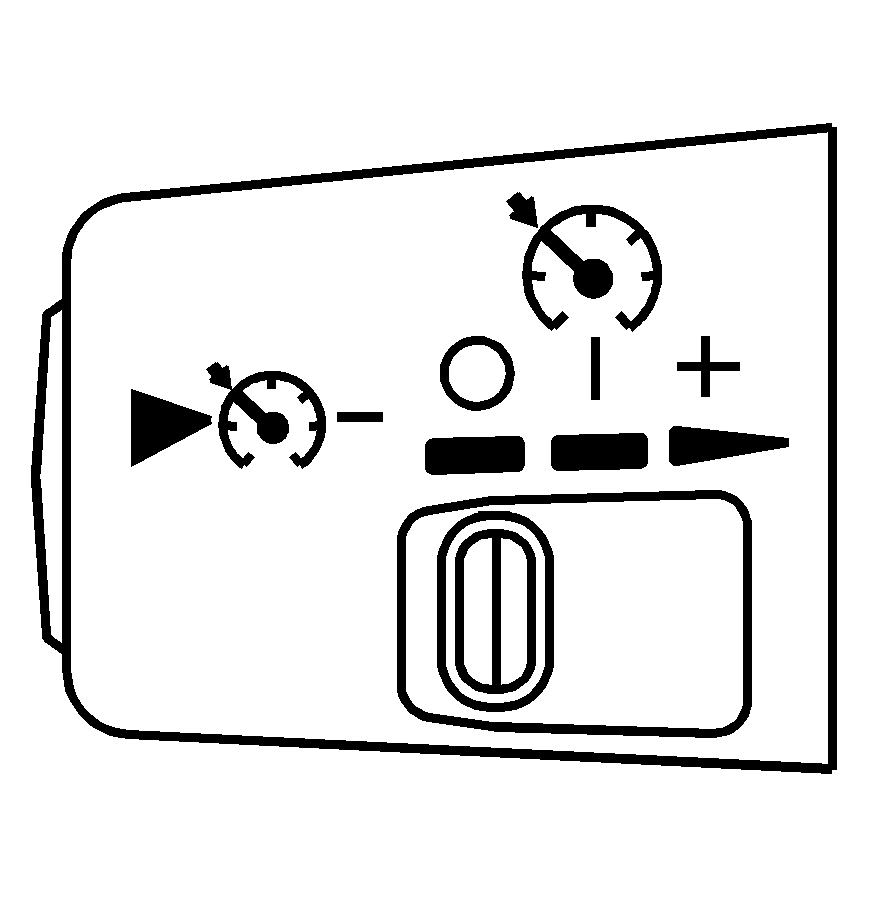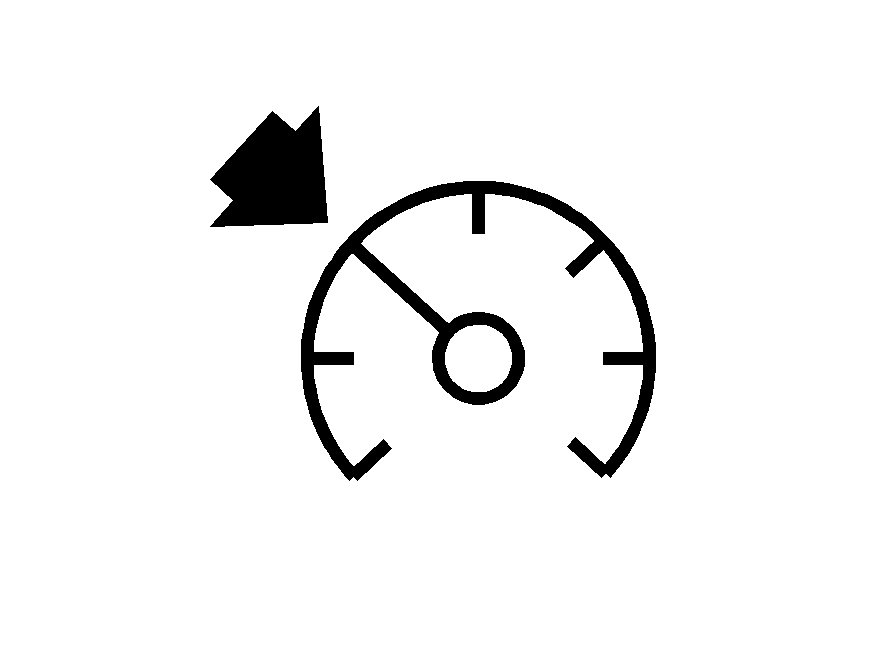Your vehicle may be equipped with cruise control.

(Off): Move the lever to this position to turn the system off.
(On): Move the lever to this position to turn the system on.
+ (Resume/Accelerate): Move the lever to this position to make the vehicle accelerate or resume to a previously set speed.
(Set): Press this button to set the speed.
With cruise control, the vehicle can maintain a speed of about 25 mph (40 km/h) or more without keeping your foot on the accelerator. This can really help on long trips. Cruise control does not work at speeds below about 25 mph (40 km/h).
Cruise control will not work if the parking brake is set, or if the master cylinder brake fluid level is low.
If the brakes are applied, the cruise control will shut off.
Caution: Cruise control can be dangerous where you cannot drive safely at a steady speed. So, do not use the cruise control on winding roads or in heavy traffic.
Cruise control can be dangerous on slippery roads. On such roads, fast changes in tire traction can cause excessive wheel slip, and you could lose control. Do not use cruise control on slippery roads.If your vehicle has the Traction Control System (TCS) and it begins to limit wheel spin while the cruise control is on, the cruise control will automatically disengage. See Traction Control System (TCS) . When road conditions allow you to safely use it again, you can turn cruise control back on.
Setting Cruise Control
Caution: If you leave your cruise control on when you are not using cruise, you might hit a button and go into cruise when you do not want to. You could be startled and even lose control. Keep the cruise control switch off until you want to use cruise control.
- Move the cruise control lever to the on position.
- Get up to the speed you want.
- Press the set button at the end of the lever and release it.
- Take your foot off the accelerator pedal.

The cruise symbol on the instrument panel will be lit when the cruise control is engaged.
Resuming a Set Speed
Suppose you set the cruise control to a desired speed and then you apply the brake. This turns off the cruise control. But it does not need to be reset.
Once you are going about 25 mph (40 km/h) or more, you can move the cruise control switch briefly from on to resume/accelerate.
The vehicle will go right back up to your chosen speed and stay there.
If you hold the lever at resume/accelerate the vehicle will keep going faster until you release the lever or apply the brake. Do not hold the lever at resume/accelerate if you do not want the vehicle to go faster.
Increasing Speed While Using Cruise Control
There are two ways to go to a higher speed:
| • | Use the accelerator pedal to get to the higher speed. Press the set button at the end of the lever, then release the button and the accelerator pedal. You will now cruise at the higher speed. If the accelerator pedal is held longer than 60 seconds, cruise control will turn off. |
| • | Move the cruise lever from on to resume/accelerate. Hold it there until you get up to the speed desired, and then release the lever. To increase your speed in very small amounts, move the lever briefly to resume/accelerate. |
Reducing Speed While Using Cruise Control
| • | Press and hold the set button until you reach the lower speed desired, then release it. |
| • | To slow down in very small amounts, briefly press the set button. |
Passing Another Vehicle While Using Cruise Control
Use the accelerator pedal to increase the vehicle speed. When you take your foot off the pedal, the vehicle will slow down to the cruise control speed you set earlier.
Using Cruise Control on Hills
How well the cruise control will work on hills depends upon the vehicle speed, load and the steepness of the hills. When going up steep hills, you miight want to step on the accelerator pedal to maintain the vehicle speed. When going downhill, you might have to brake or shift to a lower gear to keep the vehicle speed down. Of course, applying the brake turns off the cruise control. Many drivers find this to be too much trouble and do not use cruise control on steep hills.
Ending Cruise Control
To turn off the cruise control, do one of the following:
| • | Step lightly on the brake pedal. |
| • | Move the cruise control lever to off. |
| • | Lightly tap or press the clutch, if you have a manual transmission. |
Erasing Speed Memory
When you turn off the cruise control or the ignition, the cruise control set speed memory is erased.
